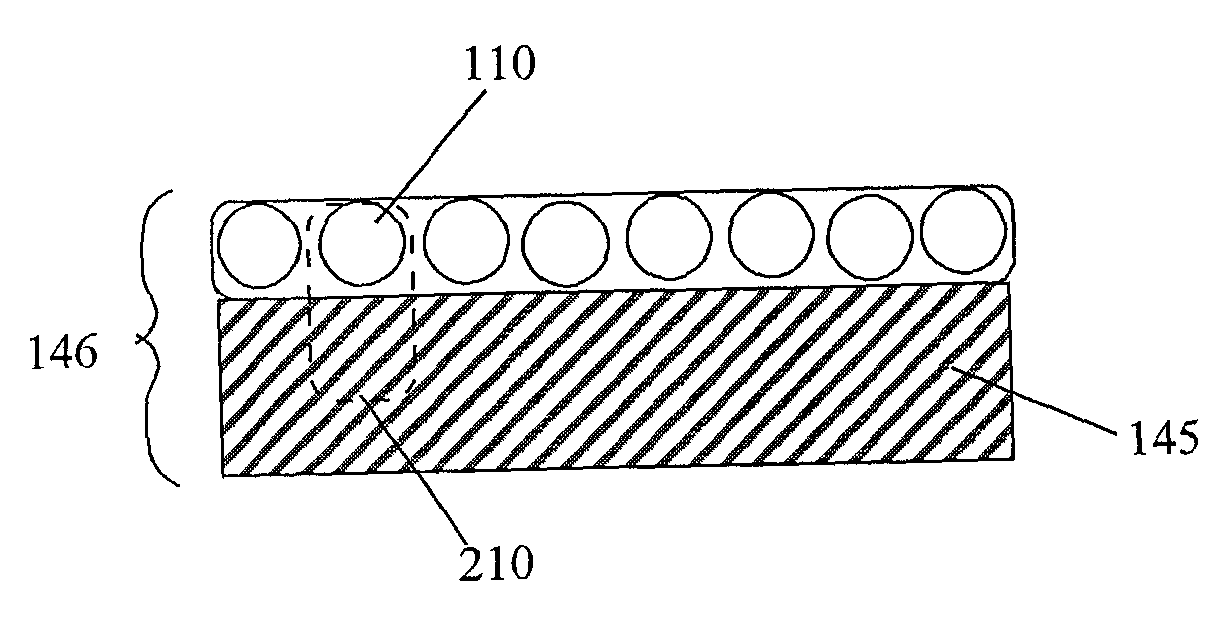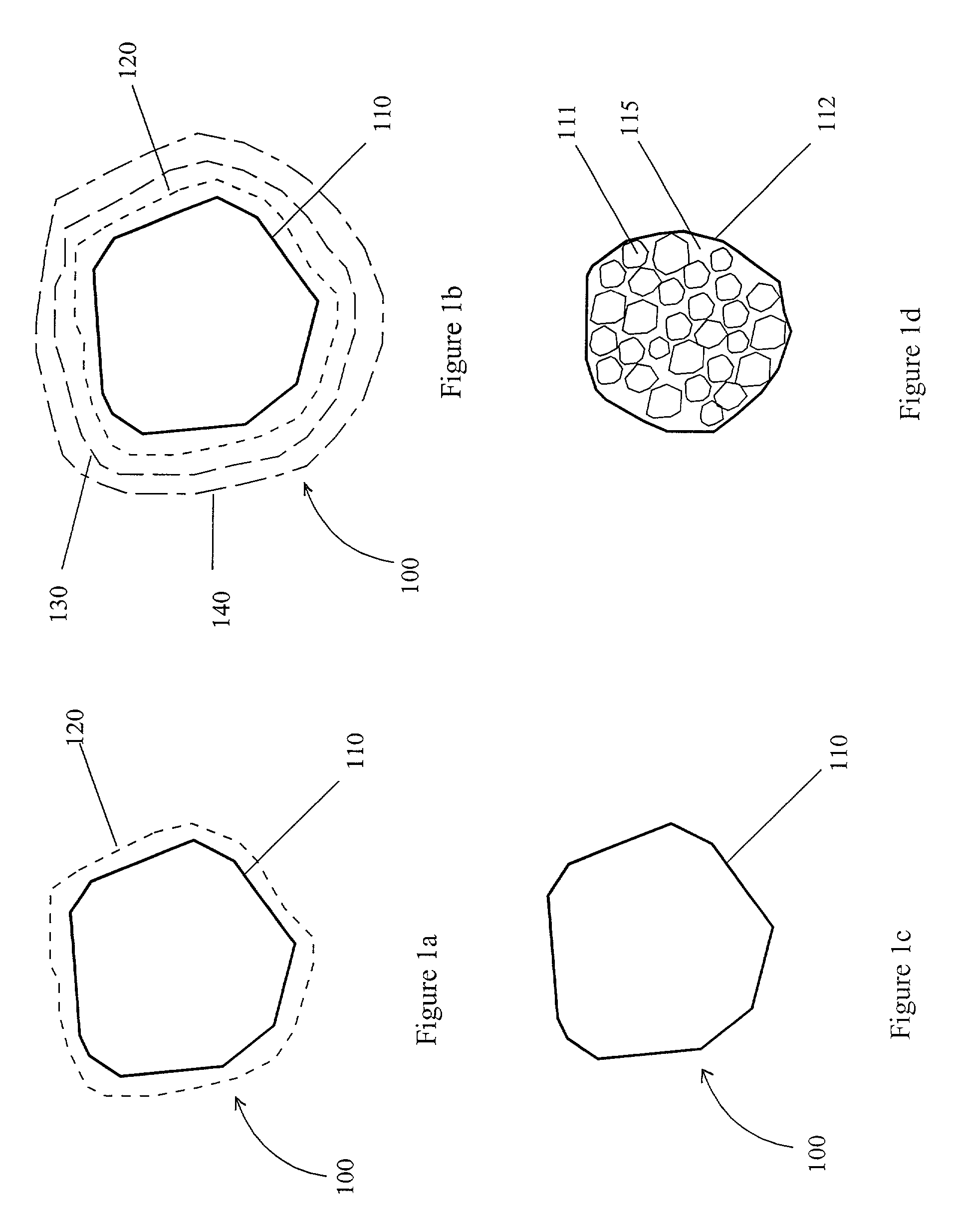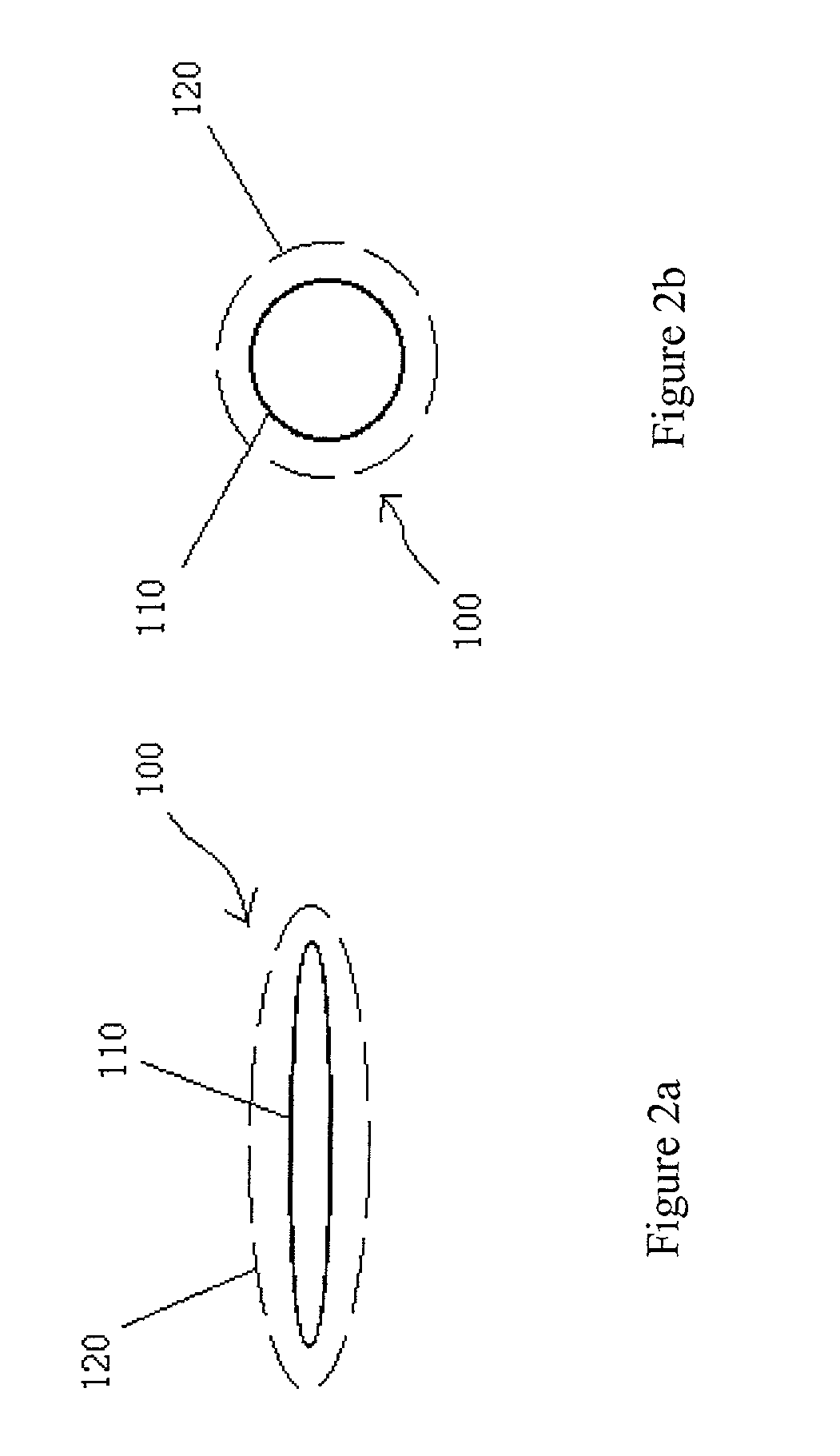Self-grown monopoly compact grit
a compact grit and self-grown technology, applied in the field of self-grown monopoly compact grit, can solve the problems of wasting effort, presenting several problems, and using the hpht process is still a very expensive operation, and achieves the effects of cost saving, good economic benefits, and convenient us
- Summary
- Abstract
- Description
- Claims
- Application Information
AI Technical Summary
Benefits of technology
Problems solved by technology
Method used
Image
Examples
example 1
[0087] The nickel coating utilized was first carried out by a non-electrolytical process, using a solution of NiCl.sub.2.6H.sub.2O, NaH.sub.2PO.sub.2.H.sub.2O, Na.sub.2C.sub.4H.sub.4O.sub.4.6H.sub.2O, and H.sub.3BO.sub.3 at a temperature of 70.about.90.degree. C. for about 20 minutes. This pre-Ni coated seed material was then nickel coated electrolytically, in a Ni-electrolytic bath in order to achieve a 100 .mu.m thick coating.
[0088] This example employs a triple coating of Ni-Fe-Ni, another nickel coating was put on by electrolysis and then a thin layer of fine iron powder was applied by a spray granulation coating process which can provide a loosely packed powder over the nickel layer. Finally, a third nickel coating was electrolytically applied.
[0089] A polylayer precursor was prepared of a slurry of 1.about.3 .mu.m diamond powder mixed with 1.about.5 .mu.m of metal powder binder (Fe, Ni, or Co) per the composition indicated in Table 1. The metal coated seed crystals were then c...
example 2
[0092] The same process as in Example 1 was used, except for the variations as shown in Table 1, such as coating thickness, cobalt instead of iron coating, and use of a PEG binder in the polylayer precursor. The recovered monopoly grits of Example 2 show signs of new PCD growth 150, similar to that shown in FIG. 9b.
examples 3-8
[0093] The same process as in Examples 1 and 2 were used with the variations as shown in Table 1. The resulting monopoly compact grits are shown in FIGS. 9b through 9e.
1TABLE 1 Coating Polylayer Precursor Polylayer Monopoly Example Mono seed size Type of thickness composition thickness compact grit No (mesh) Coating (.mu.m) (vol %) (.mu.m) Result 1 Diamond Ni 100 1.about.3 .mu.m 200 70 / 80 Ni--Fe--Ni 40-10-40 diamond (100%) 70 / 80 mesh 2 Diamond Ni 50 1.about.3 .mu.m 250 80 / 100 Ni--Co--Ni 20-5-20 diamond (80%) 80 / 100 mesh Binder (20%) 3 Diamond Ni--Ti 50-2 1.about.3 .mu.m 300 100 / 120 Ni--Fe--Ni 40-10-50 diamond (100%) 100 / 120 mesh 4 CBN Ti--Al 5-5 1.about.3 .mu.m 200 80 / 100 Ti--Si 5-1 CBN (100%) 80 / 100 mesh 5 Ni-rod No coating 0 1.about.3 .mu.m 300 Needle-shape diamond 1000 .times. 100 .mu.m 6 Diamond 1.about.3 .mu.m 300 120 / 140 Ni--Co--Ni 40-5-40 diamond (100%) 80 / 100 Ni--Co--Ni 20-5-20 7 CBN Ni--Ti 40-2 1.about.3 .mu.m 200 80 / 100 diamond (80%) 80 / 100 mesh Binder (20%) 8 Diamond Ni--...
PUM
| Property | Measurement | Unit |
|---|---|---|
| Angle | aaaaa | aaaaa |
| Percent by mass | aaaaa | aaaaa |
| Percent by volume | aaaaa | aaaaa |
Abstract
Description
Claims
Application Information
 Login to View More
Login to View More - R&D
- Intellectual Property
- Life Sciences
- Materials
- Tech Scout
- Unparalleled Data Quality
- Higher Quality Content
- 60% Fewer Hallucinations
Browse by: Latest US Patents, China's latest patents, Technical Efficacy Thesaurus, Application Domain, Technology Topic, Popular Technical Reports.
© 2025 PatSnap. All rights reserved.Legal|Privacy policy|Modern Slavery Act Transparency Statement|Sitemap|About US| Contact US: help@patsnap.com



